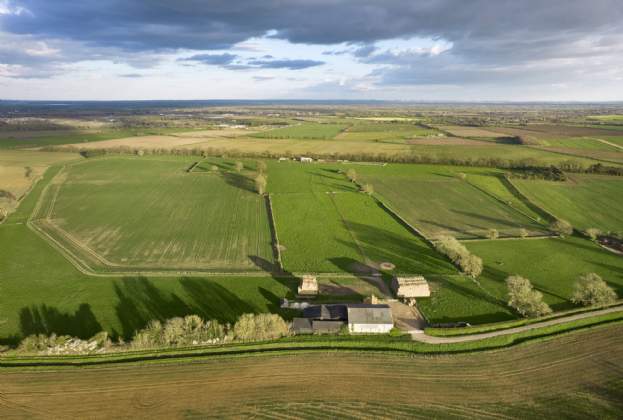The introduction by Defra Secretary George Eustice to the agricultural transition plan for England yesterday suggests now is the first time in 50 years that we have the opportunity to think things through from first principles and create a coherent policy for agriculture. What is lacking in the transition plan, however, is any sense that these principles have been coherently thought through.
A policy for agriculture can only be considered in the context of the higher policy priorities that sit around our industry. The questions submitted and answers given as part of yesterday’s policy webinar make it clear that agricultural policy is being developed with insufficient regard for these critical issues.
The first macro level policy is trade. While we still don’t know what the trading arrangement with the European Union is, we have yet to factor in the consequences of the more liberal approach to trade that this Government wants to adopt. The aggressive positioning for a free trade agreement (FTA) with America may dissipate under a Biden administration, but the US farm lobbies remain a powerful force for global expansion (and Australia and New Zealand are vocal reformers of agricultural trade).
It is hard to quantify the value that protectionist trade policies offer our farmers, however the impact of removing trade barriers is not justification for retaining them. Free trade is a clear argument for ongoing and long-term sectoral investment to compensate for the market advantage that global liberalisation offers to commodity producers in third countries.
The market-forces bedfellow to global trade is internal market operation, and further, the way in which agricultural products can be produced, marketed and labelled. Defining what agricultural trade, agricultural marketing and contractual ‘fairness’ in supply chains means to this country is the frame within which any domestic agricultural policy must be stretched to fit.
The second high-level policy of relevance is food, and despite much excitement around Henry Dimbleby’s food strategy, we have yet to see Part 2 or the Government's White Paper that is due to follow it. Some may argue that the Devolved Administrations have a better handle on food policy than England, but food policy is about much more than geographical designations. It is about procurement, health, education and distribution.
Coronavirus has shone a painful light on food health inequality and it’s now plain to see the consequences of the Government’s shift in collective responsibility for food policy onto ‘consumer choice’. Debate yesterday highlighted that farmers are understandably confused by the conflict between the rules that will guide their environmental outcomes and the lack of rules that will define food production and consumption. Coherent policy on the food-health nexus could produce a revolution in horticulture and human wellbeing – policy investment into farming should meet these higher needs, not exist in spite of them.
The final element – environment – is felt to be the core focus of the new Agriculture Act. Indeed, under the transition plan announced yesterday, the three tiers of the Environmental Land Management (ELM) scheme feature heavily, as does ongoing support for Countryside Stewardship.
The 25-year environment plan and our net zero commitments will come to dominate land use policy legitimacy and design in the years ahead, and could make it challenging for conventional farming to meet environmental protection standards. Again, the transition plan signalled only limited understanding of the investment that English agriculture will need to get to net zero. Payments for actions above the regulatory baseline are welcome, but it begs the question as to how tough the regulatory baseline will be. Higher targets need higher investment. The market mechanisms that could leverage private investment in these outcomes need to be front and centre of the policy reform process.
The agricultural transition plan and its focus on ELM places farming in a silo, again. As with European policy reform that has gone before, it seeks to retain the overall budget and simply repurpose it to new uses. George Eustice was right to point out the CAP currently works differently in all four of the home nations, but this difference is only in the implementation choices around a defined set of options. At the moment in the UK, every element of the big picture remains either unresolved or subject to intra-Union differences of approach.
The clear danger is that farmers will simply look to replace direct payments for ELM and still wonder why it is so difficult to farm profitably. Government could do more to signal the other opportunities and issues that will come to the fore in a post-CAP landscape and ensure that policy works to mitigate or leverage the impact of these big picture choices.
Farming does not exist in a silo – it meets the needs of all of those who rely on food, fibre and fuel in their everyday lives. In other words, all of us. The description of the purpose of farming in the UK is a welcome start in defining how policy can be shaped to meet those outcomes, but ELM alone won’t touch it. We need a coherent approach to reconciling these issues before farms can be expected to generate profit and for UK agricultural policy truly to be an exemplar that other countries wish to follow.

.jpg)
.jpg)



.jpg)
.jpg)
.jpg)

